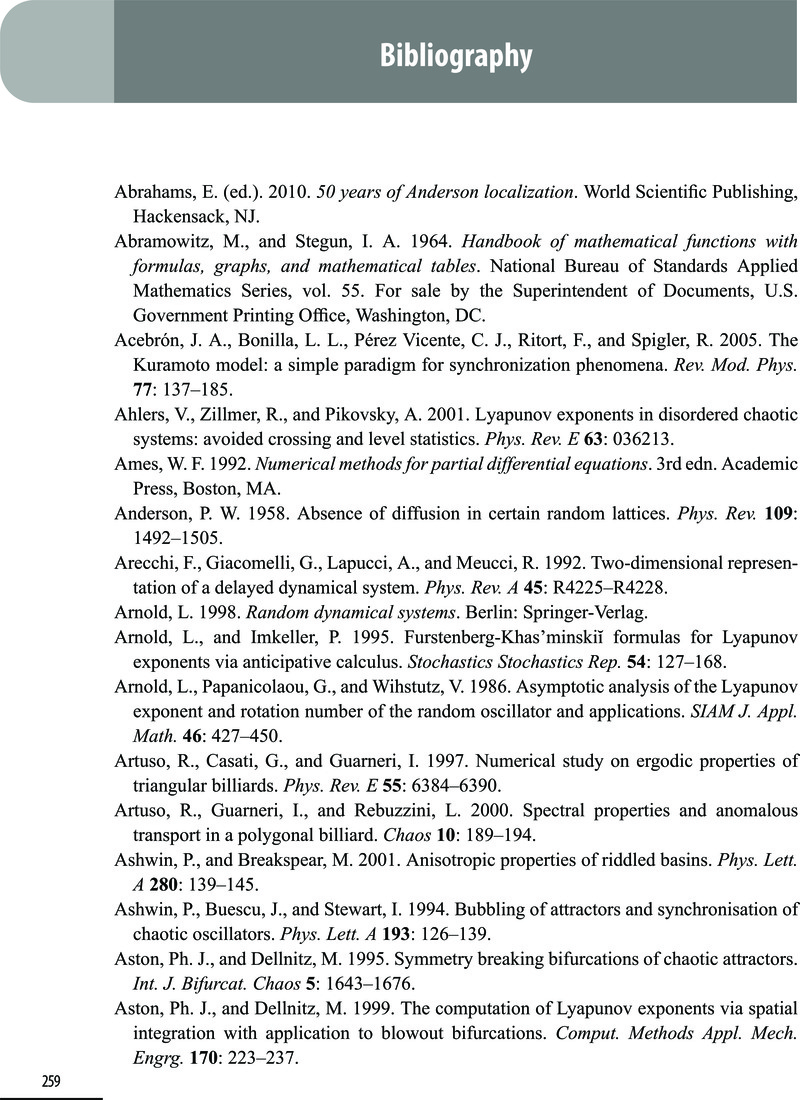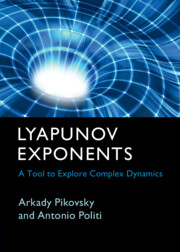Book contents
- Frontmatter
- Contents
- Preface
- 1 Introduction
- 2 The basics
- 3 Numerical methods
- 4 Lyapunov vectors
- 5 Fluctuations, finite-time and generalised exponents
- 6 Dimensions and dynamical entropies
- 7 Finite-amplitude exponents
- 8 Random systems
- 9 Coupled systems
- 10 High-dimensional systems: general
- 11 High-dimensional systems: Lyapunov vectors and finite-size effects
- 12 Applications
- Appendix A Reference models
- Appendix B Pseudocodes
- Appendix C Random matrices: some general formulas
- Appendix D Symbolic encoding
- Bibliography
- Index
- References
Bibliography
Published online by Cambridge University Press: 05 February 2016
- Frontmatter
- Contents
- Preface
- 1 Introduction
- 2 The basics
- 3 Numerical methods
- 4 Lyapunov vectors
- 5 Fluctuations, finite-time and generalised exponents
- 6 Dimensions and dynamical entropies
- 7 Finite-amplitude exponents
- 8 Random systems
- 9 Coupled systems
- 10 High-dimensional systems: general
- 11 High-dimensional systems: Lyapunov vectors and finite-size effects
- 12 Applications
- Appendix A Reference models
- Appendix B Pseudocodes
- Appendix C Random matrices: some general formulas
- Appendix D Symbolic encoding
- Bibliography
- Index
- References
Summary

- Type
- Chapter
- Information
- Lyapunov ExponentsA Tool to Explore Complex Dynamics, pp. 259 - 276Publisher: Cambridge University PressPrint publication year: 2016



